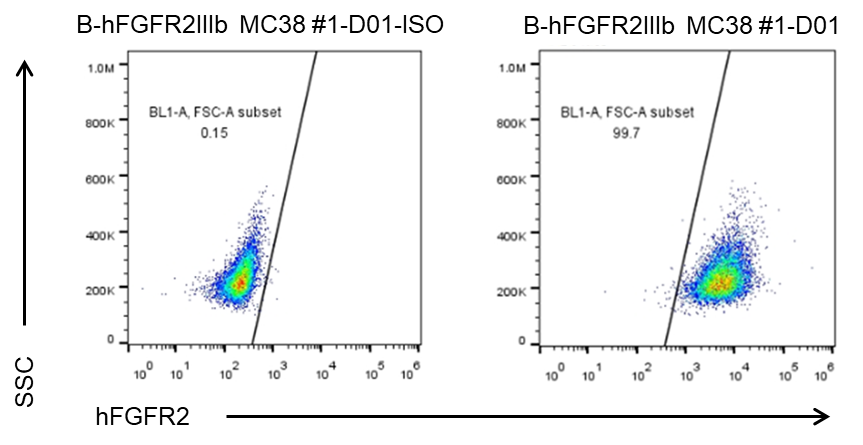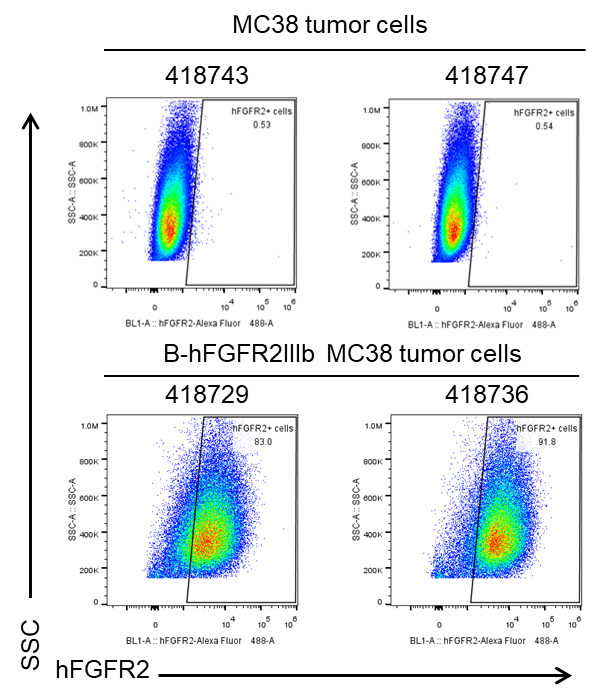
• 322307
Inoculated cell lines can be suspended with DMEM stock solution.
Before implementing the project, it is recommended to perform tumor growth experiments. The recommended cell inoculation amount is around 1E6.
In the experiment, it is necessary to ensure that the number of animals inoculated subcutaneously is at least 1.6 times the actual grouping number.

FGFR2IIIb expression analysis in B-hFGFR2IIIb MC38 cells by flow cytometry. Single cell suspensions from B-hFGFR2IIIb MC38 #1-D01 cultures were stained with species-specific anti-FGFR2 antibody (CST, 37374). Human FGFR2IIIb was detected on the surface of B-hFGFR2IIIb MC38 cells.

FGFR2IIIb expression evaluated on B-hFGFR2IIIb MC38 tumor cells by flow cytometry. B-hFGFR2IIIb MC38 cells were subcutaneously transplanted into C57BL/6 mice (n=6). Upon conclusion of the experiment, tumor cells were harvested and assessed for human FGFR2IIIb expression by flow cytometry (CST, 37374). As shown, human FGFR2IIIb was highly expressed on the surface of tumor cells. Therefore, B-hFGFR2IIIb MC38 cells can be used for in vivo efficacy studies evaluating novel FGFR2IIIb therapeutics.

Subcutaneous tumor growth of B-hFGFR2IIIb MC38 cells. B-hFGFR2IIIb MC38 cells (1×106) and wild-type MC38 cells (5×105) were subcutaneously implanted into C57BL/6 mice (female, 6-8-week-old, n=6). Tumor volume and body weight were measured twice a week. (A) Average tumor volume. (B) Body weight. Volume was expressed in mm3 using the formula: V=0.5 × long diameter × short diameter2. Results indicate that B-hFGFR2IIIb MC38 cells were able to establish tumors in vivo and can be used for efficacy studies. Values are expressed as mean ± SEM.